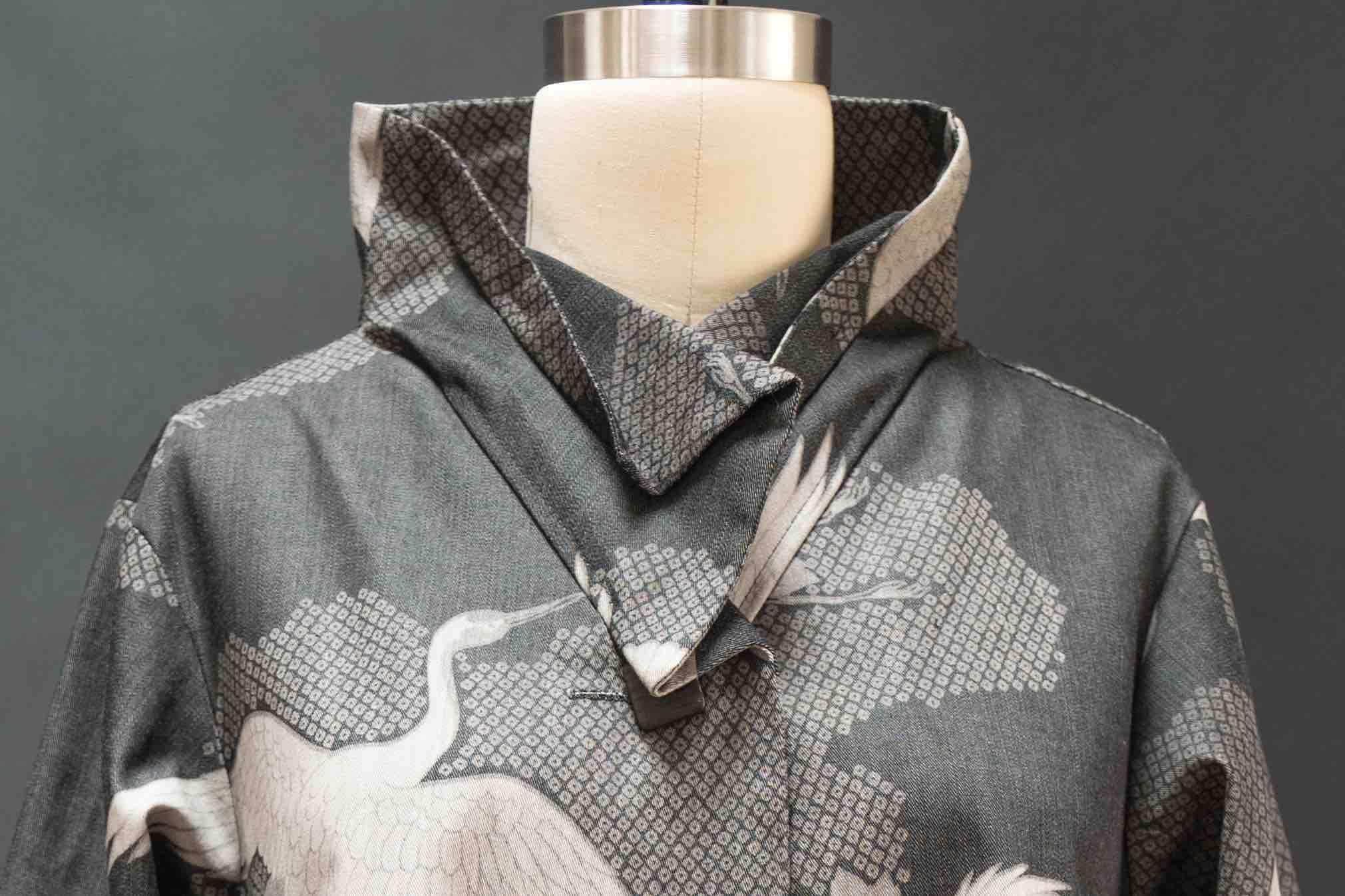The pattern offers options for design and skill level.

Choose from 2 fronts:
- Symmetrical version with side seam pockets which is simpler/quicker to sew
- Asymmetrical front with an open sculptural pocket on the left side, plain front on the right with an in-seam pocket. This version is a bit more complicated, a fun challenge for your skills.
- Hems are asymmetrical and machine finished.
- The collar can be finished and buttoned in different ways.
- Sleeves are faced so they can be rolled up to ¾ length with a finished cuff.
The Japanese Crane Denim Version With Symmetrical Fronts:




The Nylon Taffeta Version With Asymmetrical Fronts




The White Tweed Version With Symmetrical Fronts:




Sewing Tips
Before cutting or sewing, lay the body pattern pieces out as they will be sewn to become familiar with how the pieces go together - like putting together a jigsaw puzzle!Transfer markings with care so all the pieces will match up easily, and you can understand what seams join where. I used different colors of embroidery thread to mark with tailor tacks Interfacing is optional and will depend on your fabric. I interfaced the tweed, but not the nylon taffeta, nor the Japanese denim.
Left Front: THIS IS THE TRICKY BIT! Before sewing these pieces together, pin/tape the pattern pieces together as they will be sewn so you can proceed knowing how this ‘puzzle’ goes together!

Hems are pressed in place and partially sewn, leaving openings so the side seams can be stitched and finished and the remaining hem sections will be stitched in place at the very end.
Form collar pleats:
This is done when the garment is finished, after the buttonholes are sewn. Follow the pleat diagram on the pattern, or invent your own, stitching the pleats in place. The pleats on the 3 different fabrics on the pattern envelope are all a bit different.Add a stay to keep the pockets in place: When the garment is finished add a stay (piece of ribbon or finished strip of lining), stitching from the edge of the in-seam pocket to the the edge of the facing to hold the pocket flat and in place.





